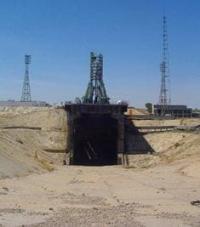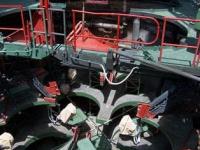You are here
Rocket and space complex "Soyuz".


Complexes at Baikonur Cosmodrome.
“The time will come when a spaceship with people will leave the Earth and go on a journey. A reliable bridge from Earth to space has already been built by the launch of Soviet artificial satellites, and the road to the stars is open!”
Sergei Pavlovich Korolev.
Excursions to Baikonur rocket and space centers.
The Soyuz rocket and space complex is the oldest at the Baikonur Cosmodrome. The most striking events in the history of world cosmonautics are associated with the functioning of this complex. The most significant among them are the launch on October 4, 1957 of the world's first artificial Earth satellite and the flight of the planet's first cosmonaut, Yuri Alekseevich Gagarin, on April 12, 1961. The complex was created on the basis of the R-7 intercontinental ballistic missile, the famous royal "seven".
Its modifications are widely known throughout the world under the names “Sputnik”, “Vostok”, “Voskhod”, “Molniya” and “Soyuz”. The number of spacecraft launches carried out using the Soyuz rocket and space complex is already approaching a thousand. Only 27 were unsuccessful.
The high reliability of the complex allows it to be widely used in the implementation of the Russian Federal Space Program and in international cooperation programs. For launches of Soyuz launch vehicles, two launch positions were built at the cosmodrome, one of them was created in 1957, the other in 1961.
The launch positions occupy a vast area (more than 100 hectares) and have one launcher, each of which is capable of performing up to 24 launch vehicles per year. Preparation of launch vehicles and spacecraft for launch is carried out in five installation and testing buildings.
Special equipment and equipment provide the necessary temperature, humidity and finishing conditions, carrying out a full list of technological operations to prepare for the launch of launch vehicles, upper stages and spacecraft.
The Soyuz launch vehicle uses environmentally friendly fuel components: kerosene and liquid oxygen. During launch, the mass of the rocket is about 310 tons, and its engines develop a total thrust of up to 400 tons at the surface of the earth.
The technical parameters of the rocket allow the launch of a payload weighing up to 7 tons into the reference orbit. A new stage in the life of the Soyuz complex began in 1996, after the creation of the joint Russian-French enterprise STARSEM, which is pursuing an active policy to promote the Soyuz launch vehicle to the global space market for launch services.
In particular, in 1999, six launches were carried out via STARSEM, which completed the formation of the Globalstar low-orbit satellite communication system.
Geographic coordinates of Soyuz rocket and space complex, site No. 1: N45°55'12.84" E63°20'32.81"
Note:
If you are using geographic coordinates for Google Earth or Google Maps navigation systems, you must remove the last two digits from geographic coordinates and " (hundredths of a second) and enter the result in the input line. Example: N51°44'09.67" E72°39'40.81" = N51°44'09 E72°39'40
Authority and photos by
http://ruscosmos.narod.ru/KA/glavnaia/Rak_nos/zenit.htm







